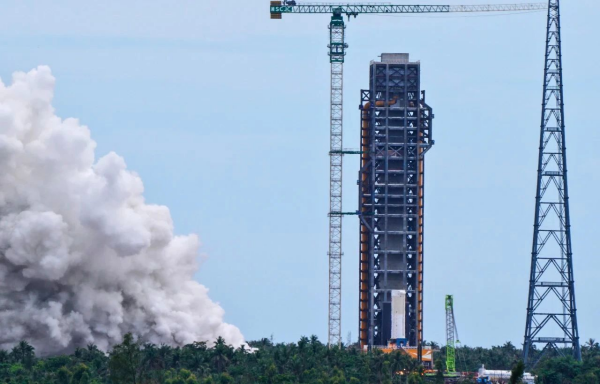China’s Long March-10 carrier rocket, the country’s new-generation manned launch vehicle, successfully completed the first static fire test on August 15 at the Wenchang Spacecraft Launch Site in Hainan Province.

China’s Long March-10 carrier rocket successfully completed the first static fire test on August 15 at the Wenchang Spacecraft Launch Site in Hainan Province. [Photo/sasac.gov.cn]
This marks another key milestone in China’s manned lunar exploration program, following the zero-altitude escape flight test of the Mengzhou manned spacecraft and the comprehensive landing and takeoff test of the Lanyue manned lunar lander.
At 3:00 p.m. on August 15, seven engines of the test product of the rocket's first stage were ignited simultaneously, followed by the completion of multiple scheduled test procedures. This static fire test evaluated the simultaneous working capacity of the seven parallel engines of the rocket's first stage under standard and high working conditions, as well as obtained complete test data.
This was China’s largest full-system test run to date, with a combined thrust approaching 1,000 tons. Despite tight construction schedules, the Wenchang site optimized its infrastructure plan to ensure the trial could be carried out on time while maintaining progress in other projects.
The Long March-10 carrier rocket series includes two configurations: the three-stage Long March-10 with boosters, designed for crewed lunar missions, and the two-stage Long March-10A, with a reusable first stage, to serve future space station missions.
The success of this static fire test has laid an important technical foundation for China’s manned lunar landing program. The Long March-10 series rockets will be widely used in upcoming manned space missions, together with the Mengzhou manned spacecraft, to achieve the upgrading of China’s manned space-Earth round-trip transportation system.
(Executive editor: Yuan Ting)